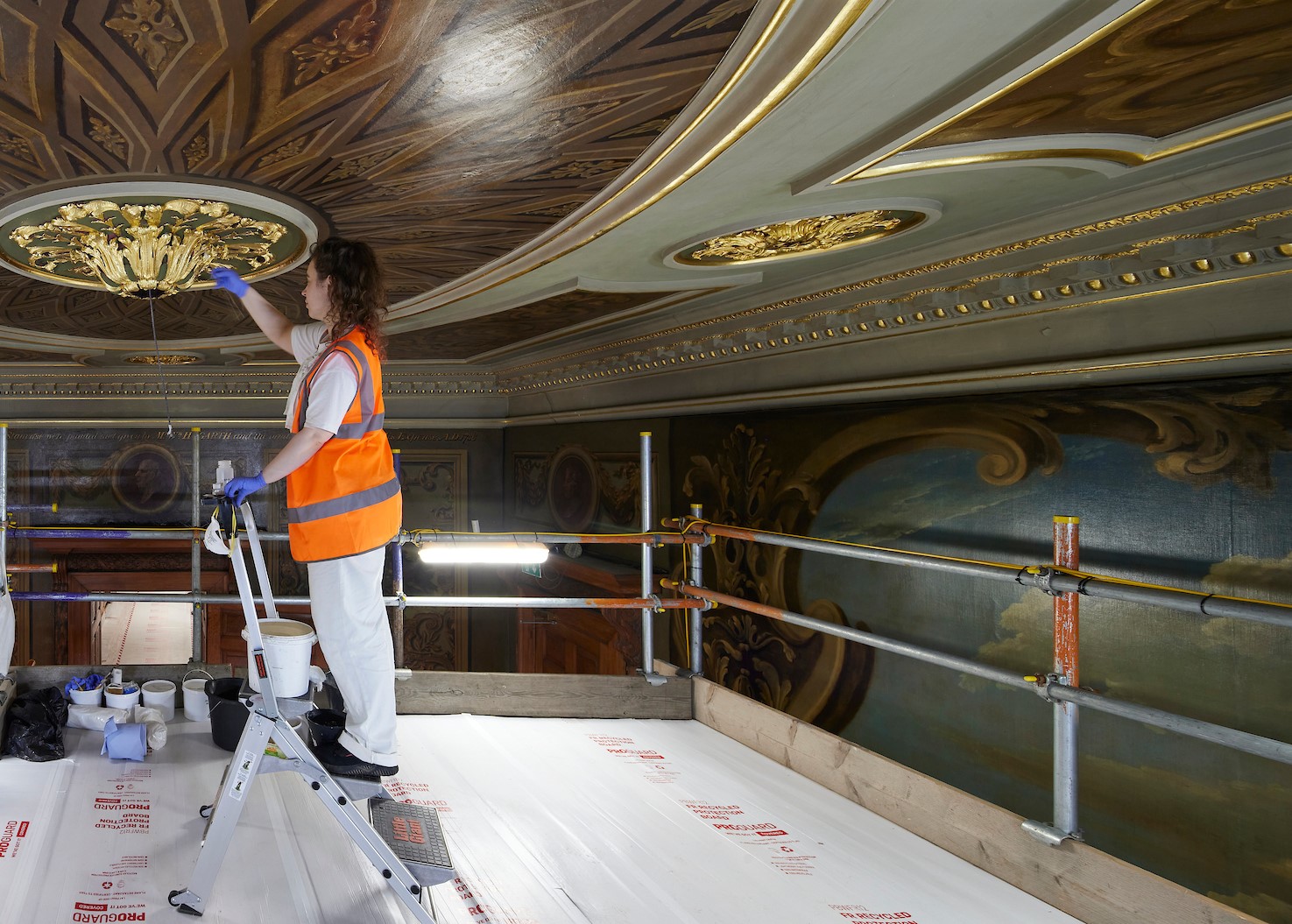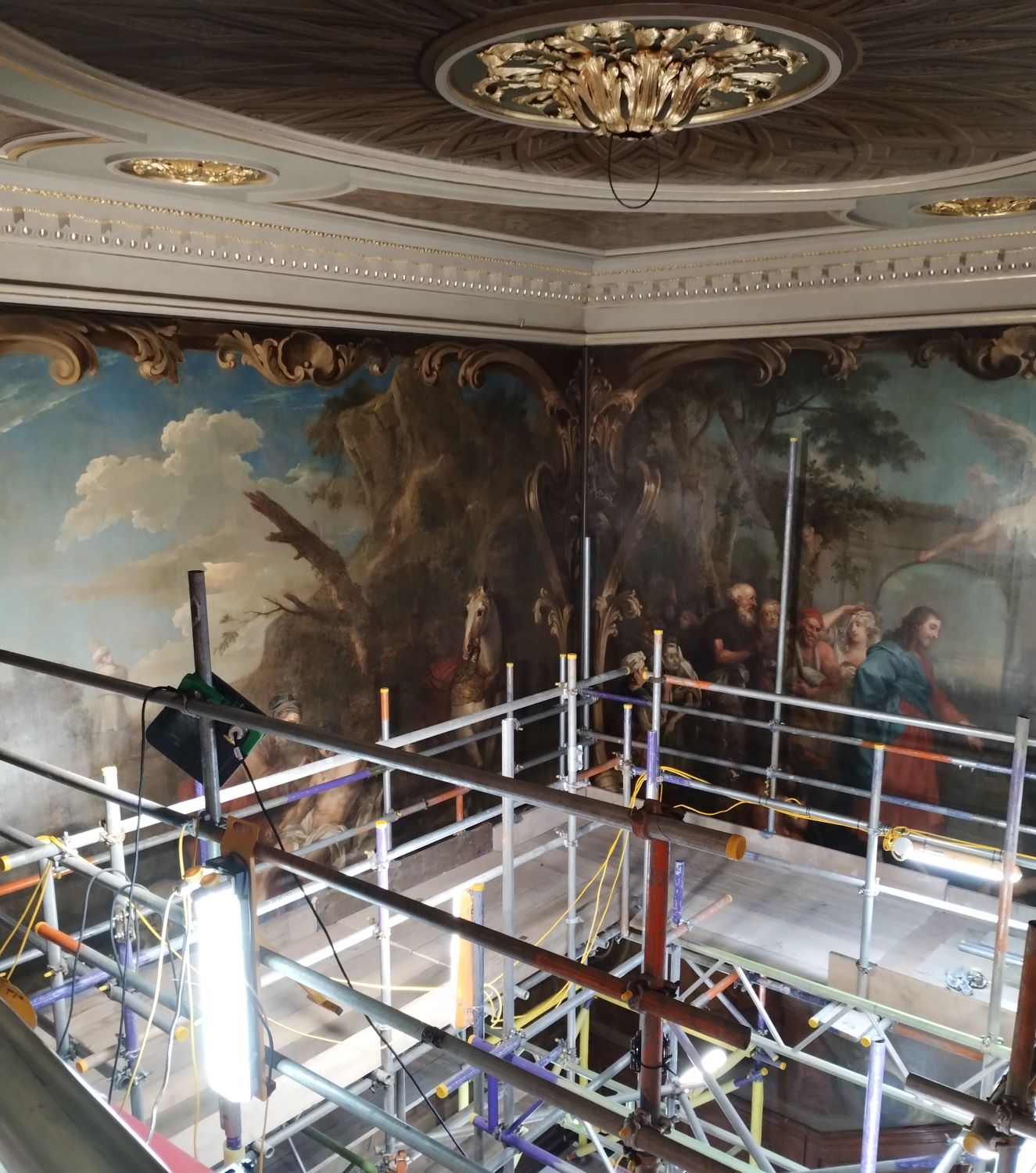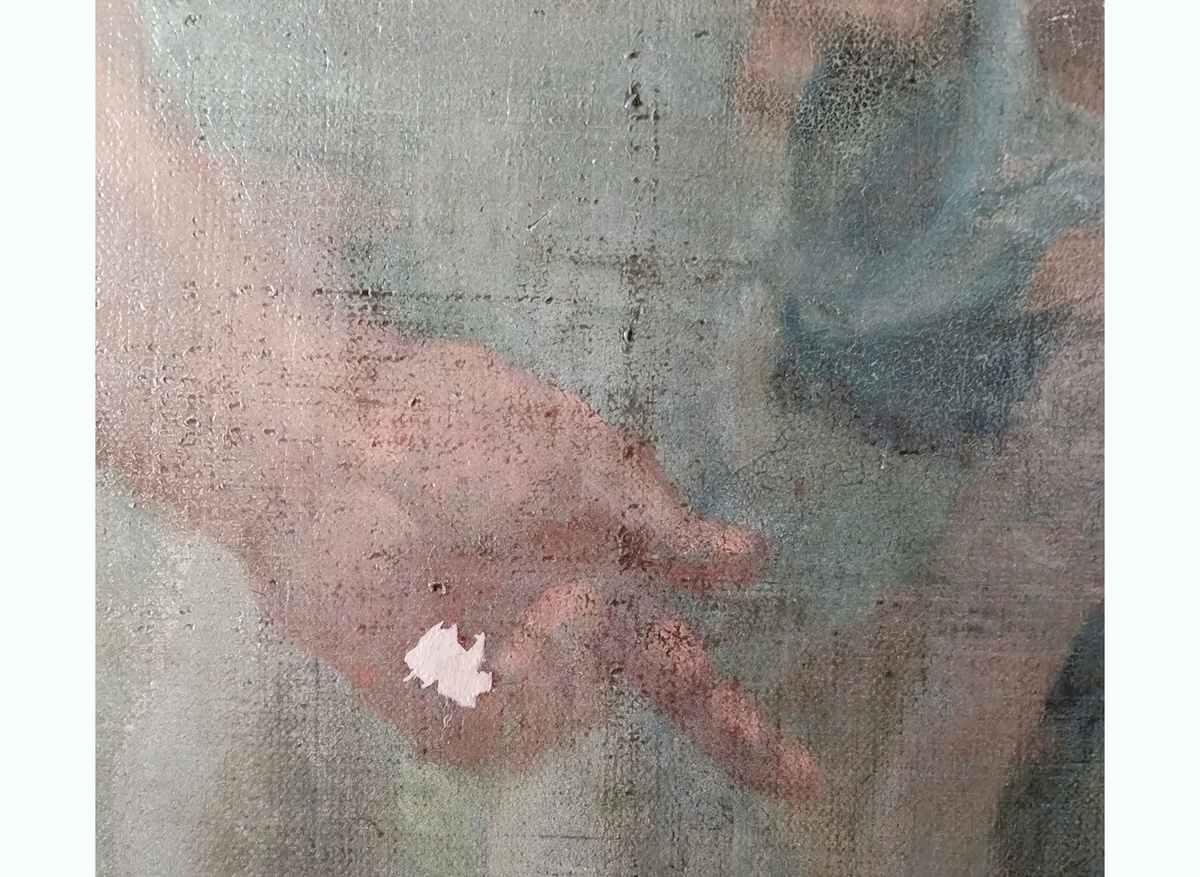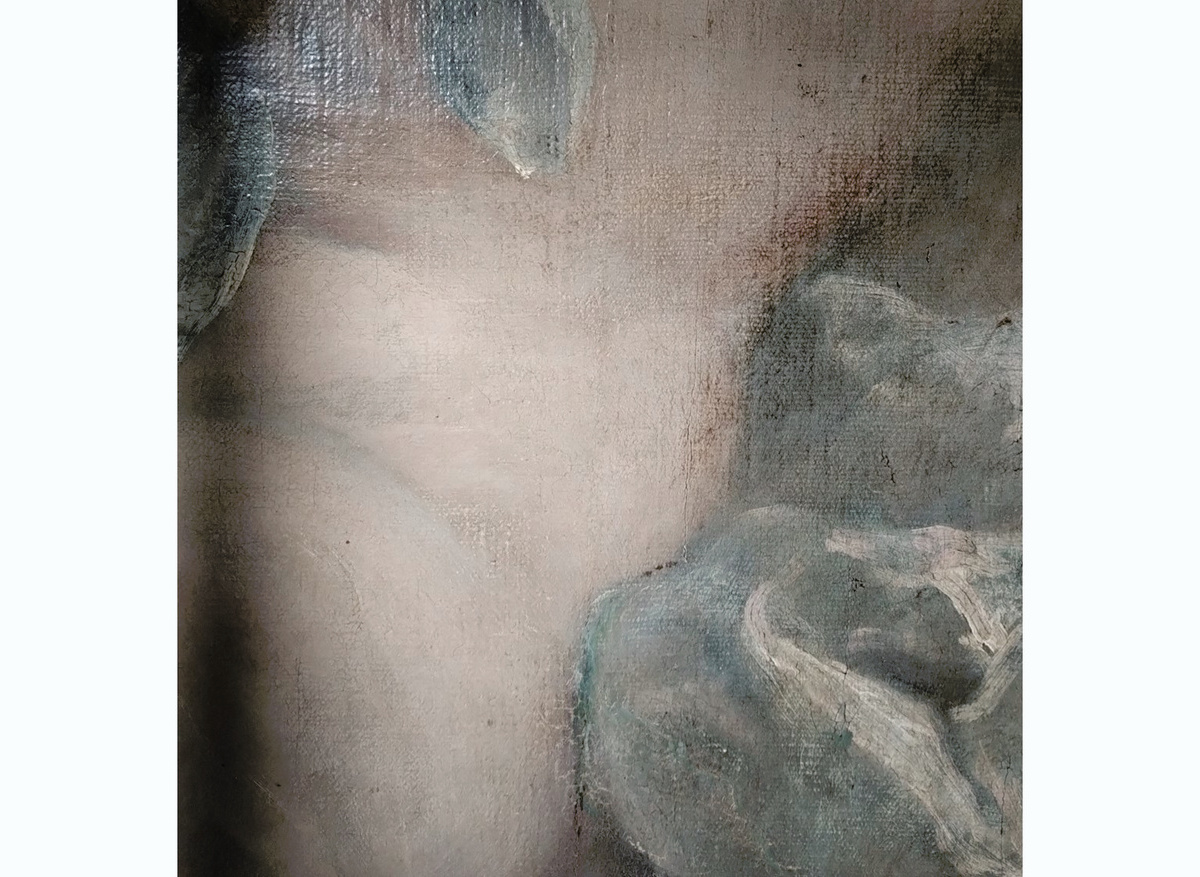Over the past six months (August 2024-January 2025), I have worked as an Icon Intern on a project to conserve the Great Hall and Hogarth Stair in the North Wing of St Bartholomew’s Hospital.
I have been fortunate to be able to work alongside conservators at Paine & Stewart Conservation and to participate in the public engagement initiative of Bart’s Heritage.
In August, I began work on the Great Hall. The ceiling is decorated with elaborate eighteenth-century foliate plasterwork. The current beige paint and gilding is thought to date from the nineteenth-century. Losses revealed remains of an olive-green paint beneath, probably original to the decorative scheme.
Over the years, the visual impact of the ceiling had been gradually dulled by dirt and dust. Water ingress had also caused damage, leading to extensive flaking in the paint and gilding.
Working on a scaffolding platform with industrial fans to combat the summer heat, we conducted a deep surface clean. We used a chelating agent diluted in water which was applied with sponges and cotton swabs.

Surface cleaning the Great Hall ceiling
I consolidated areas of flaking gilding using an adhesive inserted with a syringe. This was a particularly challenging procedure. Coming from an easel painting conservation background, I am used to working with artworks that can be laid flat so that heat and pressure can be applied to aid adhesion of lifting paint. Here, I was consolidating from a ladder with gravity working against me. I was required to adapt to a new environment and new materials.
In September, I moved my focus to the Hogarth Stair, so named in recognition of the two huge William Hogarth canvas paintings that decorate the walls. Hogarth’s The Pool of Bethesda (1736) and The Good Samaritan (1736-7) are notable; best known for his popular engravings, portraits, and series paintings satirising contemporary culture, these large-scale biblical scenes mark an unusual departure for Hogarth into the genre of history painting.

Surface cleaning the Hogarth Stair ceiling
The canvases had been conserved several times in the past; they were lined, and widespread abrasion of the paint surface indicated overcleaning. The last intervention was in 1982 when an old, discoloured varnish was removed, and a modern synthetic varnish applied.
Considering the limitations imposed by working in-situ as well as the damage caused by previous restoration campaigns, we decided to take a minimal approach to the treatment. Rather than remove the glossy 1982 varnish, remnants of natural resin varnish, and discoloured retouching, we conducted a light surface clean with deionised water and adjusted the old overpaint with Gamblin Conservation Colours. Efforts will now be made to control the humidity, temperature, and lighting in the staircase to prevent further degradation and reduce the glare from the varnish.
The remedial treatment was a long process due to the scale of the paintings. We worked on scaffolding, starting from the top and gradually working our way down. The treatment made a significant aesthetic difference; the paintings are brighter, and the old retouching no longer draws the viewer’s eye away from Hogarth’s original technique.
Throughout the project, Barts Heritage have conducted regular group tours of the site. A particularly rewarding aspect of the internship has been speaking to these visitors about our conservation work, interesting aspects of Hogarth’s technique, and the infrared analysis that has been undertaken. It is wonderful to see the impact that the treatment has had on the viewer’s appreciation of the artworks.

View of the Hogarth paintings after treatment
I am hugely grateful to Icon, Bart’s Heritage, and Paine & Stewart for the opportunity to work on this project. I have honed my practical conservation skills and learnt about the opportunities and difficulties of in-situ projects. I have particularly valued working with and learning from a team of wall painting conservators and being challenged to think about how to treat large decorative schemes.
The Icon Internship Programme is a structured placement that offers emerging conservation professionals an invaluable opportunity to develop their careers, expand their professional networks, and gain practical experience by learning directly from highly experienced conservation practitioners.
Royal Museums Greenwich is currently advertising a Conservation Internship: Horology and Scientific Instruments. This 12-month internship is delivered in partnership with Icon as part of the Collaborative Conservation Skills Internship Programme. It is generously funded by the Anna Plowden Trust, Idlewild Trust, Julia Rausing Trust, Pilgrim Trust, Radcliffe Trust, and the National Manuscripts Conservation Trust. Click here to find out more about the role.
Click here to find out more about Icon's Internship Programme.





